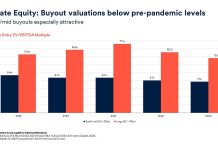Commercial real estate investment remains buoyant, with volumes to end-Q3 up 11% year on year to £38.4 billion, with overseas investors accounting for 53%, according to new research published by BNP Paribas Real Estate.
The period has seen investors target an increasingly diverse sector allocation in the face of a changing political, economic and property landscape; for the year to Q3, alternatives totaled over £9 billion, accounting for 24.7% of transactions and 55% above the sector’s 10-year average.
This increased appetite for alternatives is mirrored in Total Return Indices; despite MSCI data showing a drop in All Property level annual Total Returns to 5.5% (year to June 17) from 8.9% (year to June 16), all alternative sectors covered by the data maintained or far surpassed their 2016 level.
Both office and retail transactions fell below the 10-year average, accounting for shares of 29.6% and 22.9% respectively to-end Q3, while the industrial sector continued to show its strength, accounting for 20% of transactions, above the long-term average, and due in part to the ongoing impact of e-commerce.
Interest in alternatives strengthened amongst Overseas investors, who accounted for 46.2% of alternatives investment in the period 2012-16, up from 30.9% across 2007-11.
Damian Cronk, Head of Commercial Transaction at BNP Paribas Real Estate said: “Previously the preserve of primarily domestic investors, we’ve seen Overseas investors increasing their positions in alternatives capital market assets.
“Significantly, Overseas investors were responsible for 7 out of the year’s top 10 alternatives transactions to date, including the £460m acquisition of the Union State student residential portfolio by Liberty Living in Q2.”
Following the Bank of England’s decision to leave policy unchanged at the September meeting, which was widely expected, BNP Paribas believe November would be too early for the BoE to move, although the MPC minutes imply the possibility of an interest rate hike later this year or early next year. Historical data show that higher interest rates have not necessarily derailed real estate total return performance.
Sukhdeep Dhillon, Senior Economist at BNP Paribas Real Estate said: “After a sustained period of exceptionally low interest rates commercial real estate developers, lenders and investors are concerned that CRE values will be negatively affected if interest rates were to rise.
“However, there is an incredibly low correlation between higher interest rates and lower real estate values. In addition, CRE values are impacted by other significant drivers like demand and supply changes, transaction activity and trends in the overall economy.
“There are a number of factors that may provide protection to overall property performance in a rising interest rate environment. In particular, rate hikes in the current environment would reflect expected strengthening of economic conditions – which should be seen as a positive.”





















